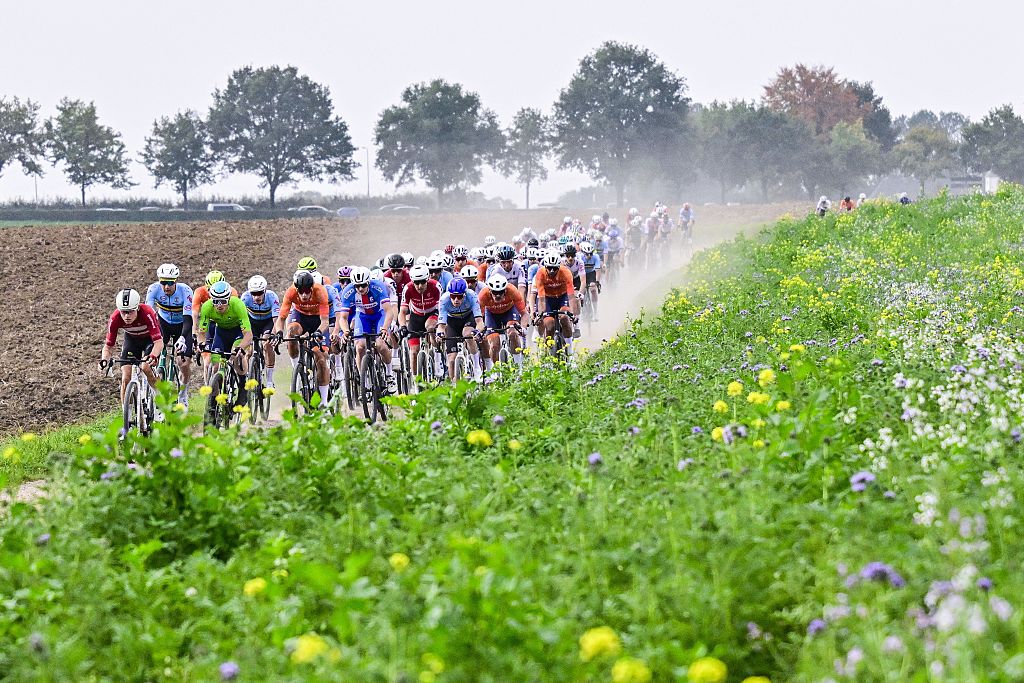Wind tunnel tested: Where should you carry your bottles?
Are empty cages slower? And do aero bottles actually make you faster?
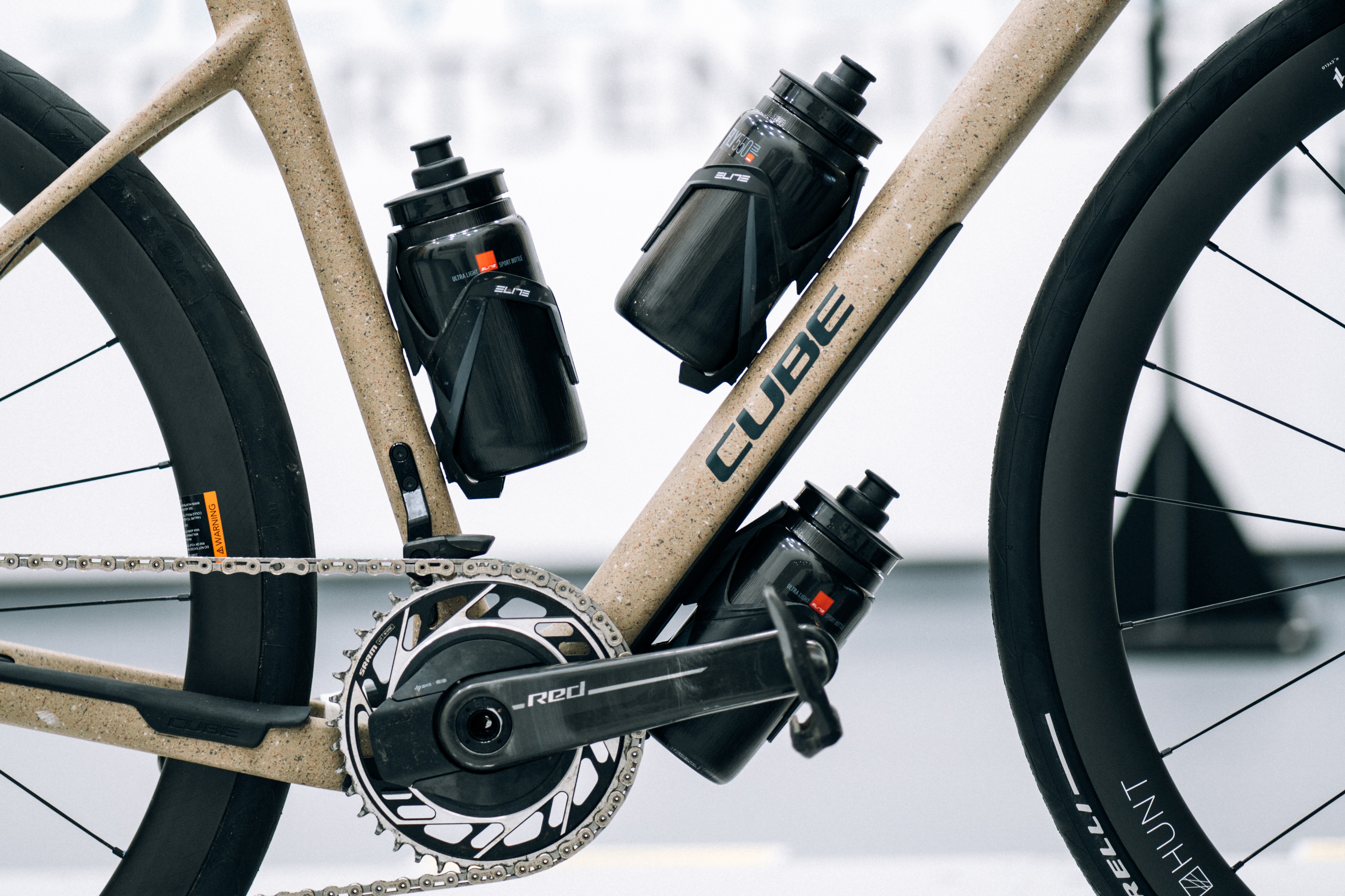
I think my first introduction to cycling aerodynamics came in around 2015. I'd recently picked up road cycling after racing mountain bikes in my youth, and I'd decided to enter the local 'Exeter Wheelers Wednesday night Club 10' time trial.
As I reached down to take my bottles out of my cages at the race HQ (read: random village hall), a friend stopped me and repeated a hand-me-down axiom that claimed empty bottle cages were slower than simply carrying your bottles.
I remember being fascinated by the idea that aero trumps weight, but took his advice as gospel, slid my bottles back into their cages, and set off (wearing a long-sleeve Castelli Gabba. Clearly, much was to be learned).
In 2015, the whole marginal gains philosophy had been in action for a few years at Team Sky, but it was far from gaining widespread acceptance. The decade since has seen finding those small savings become ever prevalent, and in many cases, the key to success, both at the top level and in grassroots cycling, too.
Here at Cyclingnews, we've spent the past year building up the 'CN Labs' content series, using wind tunnels, rolling resistance rigs and more to empirically test as many cycling components as we can, to help our readers understand where to spend their money in the pursuit of going faster.
We've found the fastest aero helmets, tested budget vs aero cycling kit, compared 11 of the best superbikes on the market, put 18 road wheelsets head to head, and we even rolling resistance tested road tyres.
Today's test focuses on bottles, and we had plenty of questions to answer: Should you use one, two or even three? If one, where should you mount it? Are aero bottles all they're cracked up to be? And with all the limelight being on lowering core temperature and optimising cooling strategies, is there a penalty for running big 750ml bottles?
And, most importantly, to take me back to 2015 and complete the circle of my journey into aerodynamics, was my friend right? Are empty cages slower than full ones?
Let's get stuck in and find out.
The test
Best water bottles for cycling: Stay hydrated on the go
Best bottle cages: 24 options rated for all types of riding
To find out, we headed to the wind tunnel at Silverstone Sports Engineering Hub. This is a cycling-specific wind tunnel, and it allows us to measure the CdA (Coefficient of Drag x Area) of a given item.
CdA is essentially a measure of how easily something moves through the air. The 'Cd' portion (Coefficient of Drag) relates to how easily air passes over an item's surface, whereas the 'A' is the item's Area. Put simply, the bigger an item is, the more air it will hit, but if you change the item's shape and surface material, you can reduce the Drag Coefficient. This is why a bullet is more aerodynamic than a coin of equal size, for example.
We tested using a Cube NuRoad SLT gravel bike, and ensured everything apart from the test variable remained completely unchanged between tests, including the wheels, tyres, crank position and so on. This bike offered us the chance to test a third bottle on the underside of the downtube, but the main reason we used it was for its tyre clearance, because on the same day we also tested the aero performance of various road tyre widths. The results of that were pretty shocking, concluding that 40mm tyres are likely faster for most people.
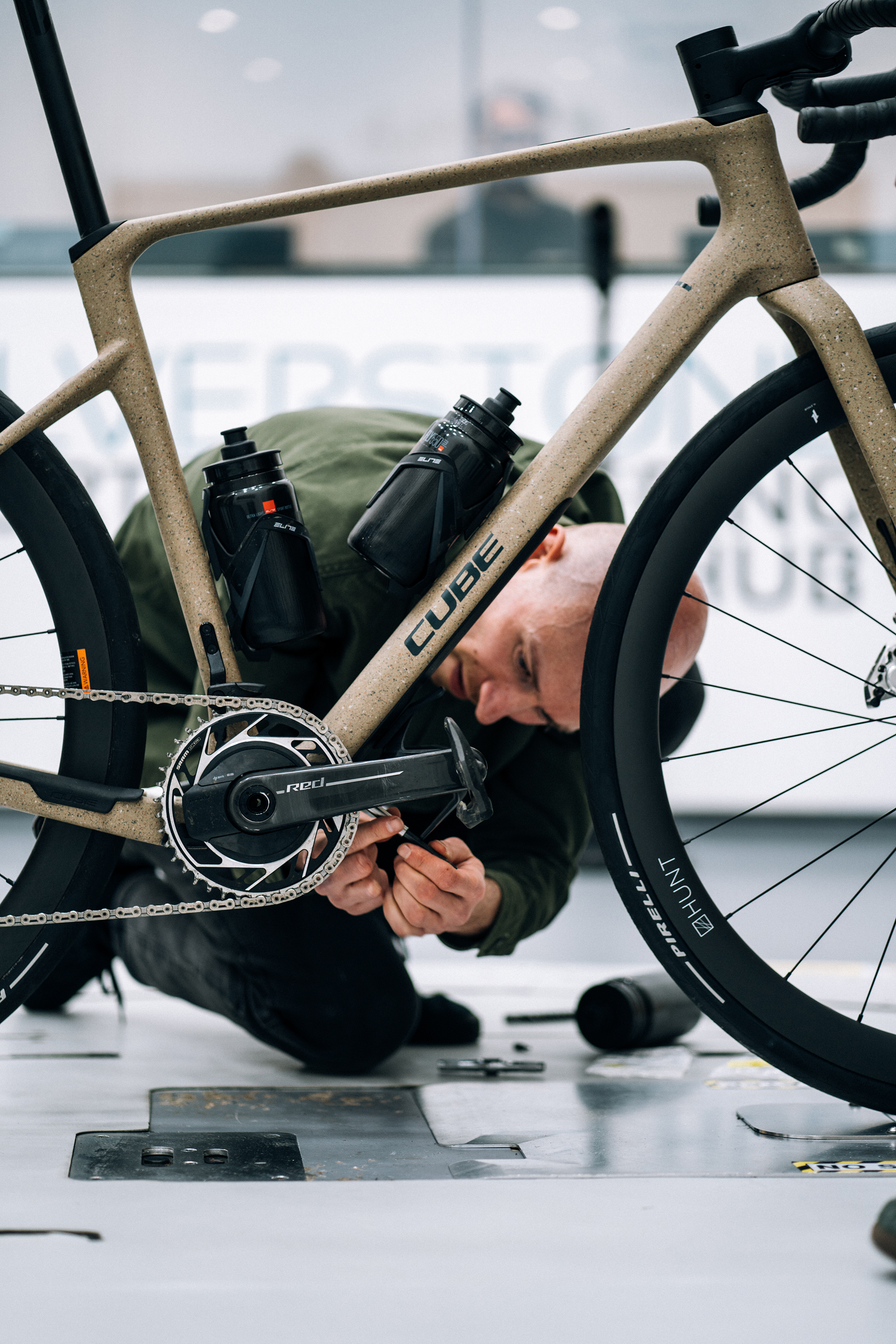
We tested the following setups:
- No bottles
- One bottle, mounted to the down tube
- One bottle, mounted to the seat tube
- Two bottles, on the seat tube and down tube
- Two tall 750ml bottles, on the seat tube and down tube
- Two empty bottle cages, on the seat tube and down tube
- Three bottles, on the down tube, seat tube, and the underside of the down tube
- A single Elite Aero time trial bottle, mounted onto the down tube
- A single Elite Aero time trial bottle, mounted onto the seat tube
- A pair of Elite Aero time trial bottles, on the seat tube and down tube
We tested the setups without a rider. I admit it would be more realistic to test with a pedalling rider, but the accuracy of the result would have been lost given the small differences we were trying to measure. We opted for clean data with confident conclusions.
We tested each setup at 40km/h - my thinking here was that anyone questioning how many bottles to use and their ideal position is probably racing, and likely doing shorter, harder races. Amateur riders doing longer races or sportives, where the speeds are more likely slower, would prioritise carrying the extra fuel, and if you're riding over 40km/h, you're probably sitting in a bunch where aerodynamic impact is reduced.
We tested at five yaw angles, in five-degree increments from -10° to +10°, to simulate the wind hitting the bike at various angles.
Each capture - essentially the period during which the CdA measurement is taken - was held for 15 seconds, and if any unexpected turbulence was found in the CdA readings (ie, if it randomly jumped up or down mid capture) we'd repeat the test. Luckily, each test recording was stable.
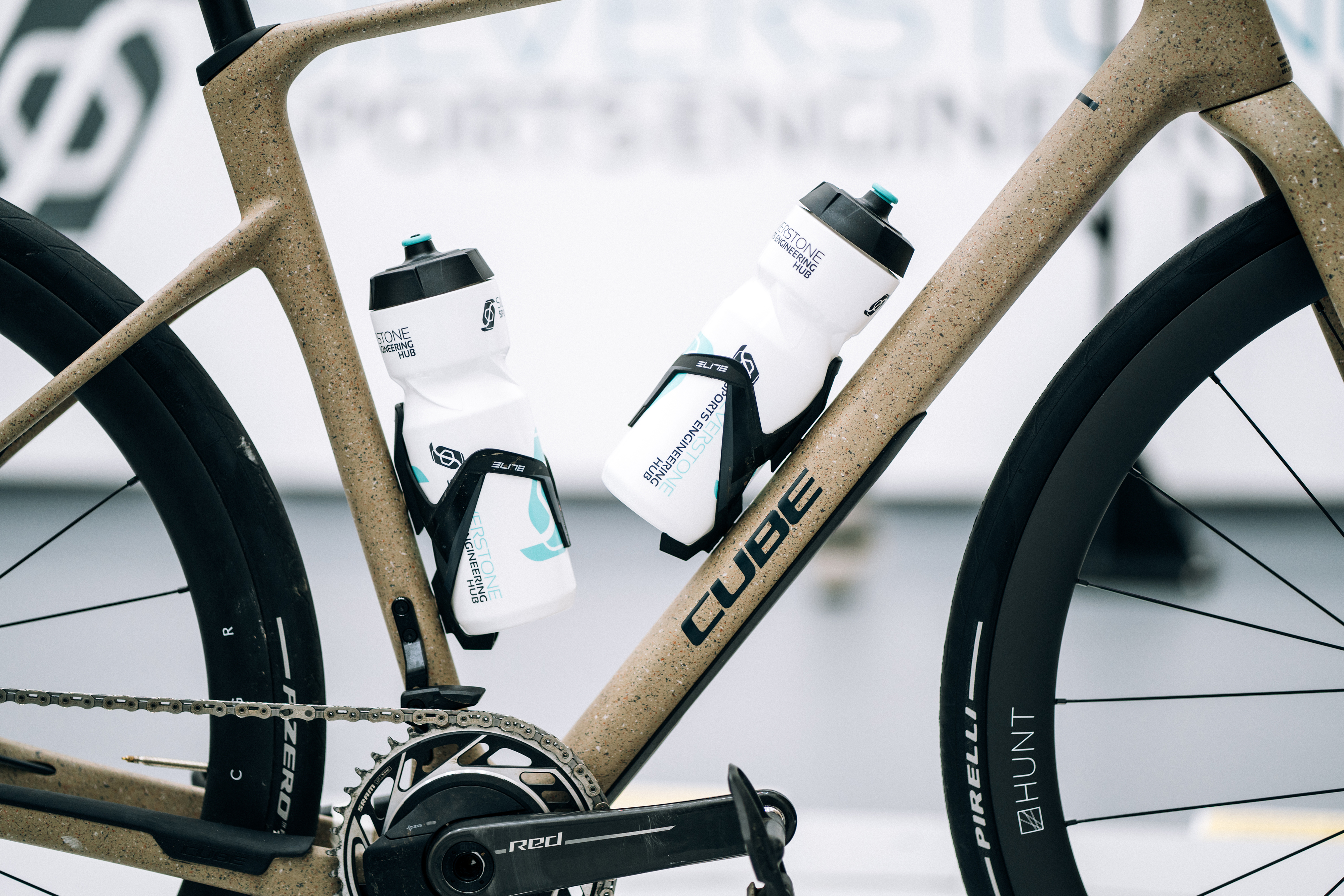
Confidence margin
We performed a repeat of the first configuration (no bottles or cages) at the end of the day to understand what sort of variance we could see in our results, even before we changed anything.
We calculated the margin as 0.0385 watts or a CdA difference of 0.00004 m². This is a very small margin, even for a test without a rider, but one that's reflective of the minimal interference we were having. We didn't need to remove the bike from the stanchions, turn the cranks, or change wheels. Aside from the addition and removal of bottle cages, everything else remained untouched. We also managed to test everything within about an hour, so there was minimal temperature swing throughout the test, and the machines had been given plenty of time to warm up beforehand.
The caveats
As with any of our CN Labs projects, Cyclingnews does not claim that this data is the final word on the aerodynamic performance of the items included, but rather an additional stream of independent, unbiased testing and information for our members.
The results are simply representative of our day of testing. We hope that being clear about our method and our protocol allows readers to appreciate the data while also understanding the bigger picture.
We also understand that a rider's pedalling legs may affect the airflow around the bottles and affect any of the savings found. Still, we think the bike-only data is valuable and worthy of sharing.
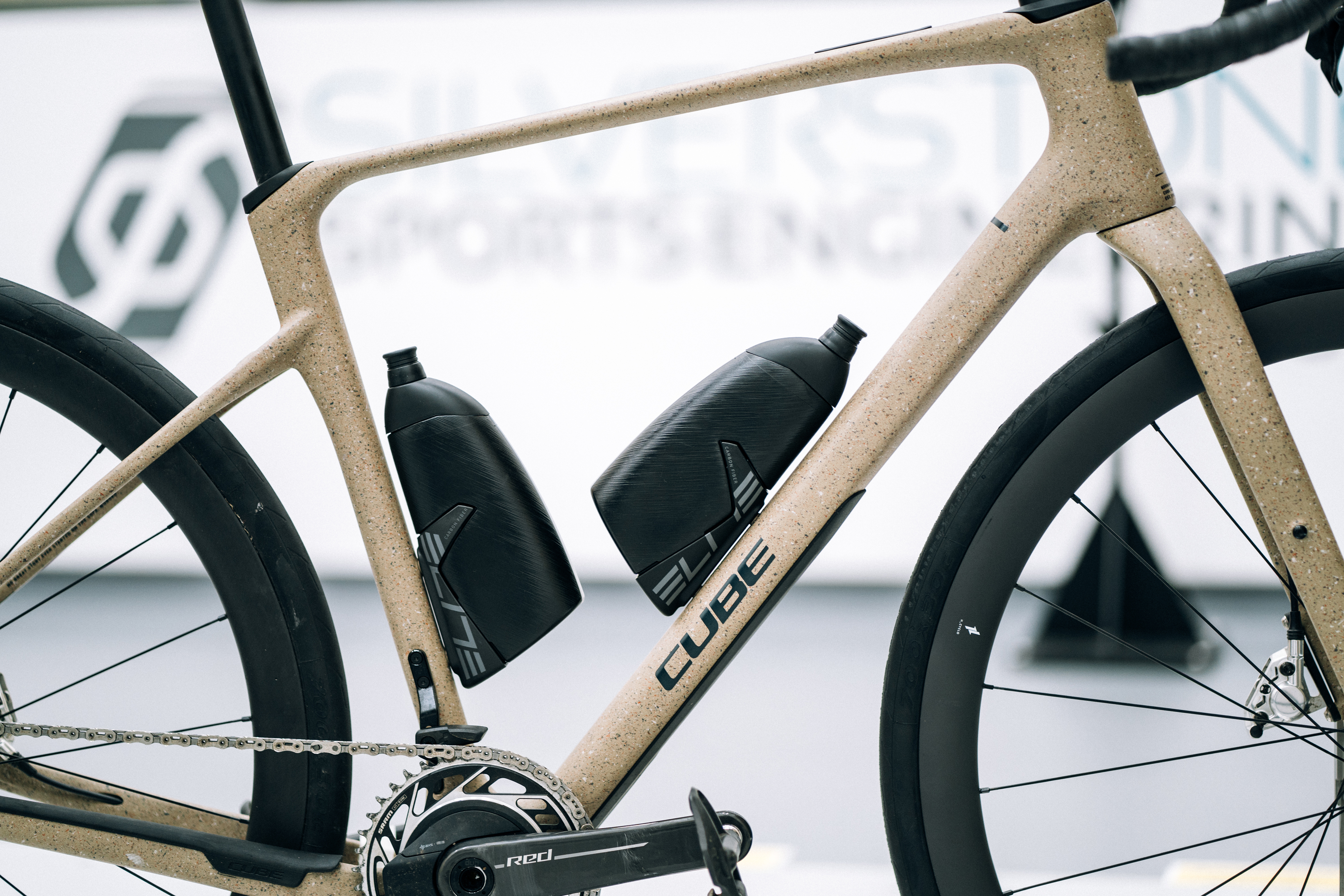
The results
When showing the results, I will start by showing the CdA of each configuration. I will then use those figures to quantify the power required to pedal at a given speed.
Typically, we would use this formula, which assumes everything else (weight, drivetrain friction and rolling resistance) remains constant:
Power (watts) = 0.5 x AirDensity x CdA x Velocity^3
However, given there is quite a sizeable weight difference in adding (full) water bottles to a bike, I will also factor in the additional power required as a result of this weight.
For that, I will use this equation, which is a simplified version of the full equation but one that is generally accepted as being accurate at lower gradients.
Power (watts) = Weight x Velocity x Gravity x (Gradient ÷ 100)
Added together, this will give us the power required to overcome air resistance and gravity. In a real-world scenario, you would also factor in rolling resistance and drivetrain friction, but since we're only interested in the differences between each bottle setup here, we'll assume those factors remain constant and set them at zero.
Since we're working with a bike only, the CdA and weight are both small, and therefore the power required will be small. This is for comparative purposes only, we know bikes can't pedal themselves.
However, for the sake of showing the effect on a full rider, I will also apply the differences to a baseline rider with an arbitrary CdA of 0.3 and weight of 83kg. For this, I will set the no-bottle-cages setup as the 'zero', and adjust the CdA and weight from there.
In the graph above, I've ordered by CdA from lowest to highest, and added an approximate weight figure for each configuration (bottle, cage and liquid) to the side.
From a purely aerodynamic perspective, there are a few interesting points we can infer from the data.
As we expected, the aero time trial bottles from Elite are more aerodynamic than standard round bottles.
Running a bottle on the seat tube came out at the same CdA as running one on the more conventionally used down tube, so whenever you want to run a single bottle, there is no right place to put it. Use whichever feels more comfortable for you.
If all-out speed is what you're after, running the Elite bottles is the solution, but if you don't have a set, then you're better off running nothing at all. Of course, that only applies if you can make it through your chosen event without water.
Perhaps most interesting is that running three bottles, with the third on the underside of the down tube, was faster than running two, and even faster than running two 750ml bottles.
To help you quantify the differences, here's a graph that shows how these CdA figures translate into watts required at 40km/h.
This shows that from the fastest option, the Elite Chrono aero bottles require two fewer watts than the worst option, the two empty bottle cages.
However, all of the above is useful when riding on the flat, but they ignore the impact of weight when riding on hills. Of course, most courses include a mix of uphill and downhill, but to keep this from becoming a 10000-word essay, I'll focus on riding uphill.
Using the approximate weights for each configuration, I have calculated the power required at 0%, 2.5%, 5%, 7.5% and 10% gradients.
The reason I've done it at five different gradients is that I wanted to show how much the importance of weight grows as hills get steeper. In the above graph, I've shown the lightest and heaviest options in our test, no bottles vs three bottles; a swing of 1.8kg. At a gradient of 0%, the power required to overcome gravity is zero for both options.
At 2.5% the baseline takes an additional 21.8 watts, growing to 26.7 watts when you add the three bottles, a difference of 4.9 watts. At 10%, that same 1.8kg weight gain will cost you 19.6 watts.
Here you can see that on flat terrain, the Elite cages save 0.9 watts compared to the no-bottles-no-cages baseline configuration. That saving shrinks to 0.4 watts when you start climbing, and when you hit gradients of 5%, the additional weight begins to make itself known, making you 0.2 watts worse off.
For the heavier options, such as two or three bottles, the number of watts required grows significantly at higher gradients, with the heaviest option costing you a chunky 20.4 watts compared to the baseline. Remember this is for the bike without the rider though, so this figure is somewhat exaggerated.
Here, with our figures adjusted to mimic a real rider, I have calculated at a slightly more attainable speed of 30km/h. The whole reason for adding a rider into the equation is to make it more real-world applicable, but nobody can ride uphill at 40km/h, so it made sense to adjust.
Here, at the slower speed, the available savings are more modest. There's just 0.4 watts on the table between the baseline and the fastest option on flat terrain. In fact, all setups are within just half a watt. As soon as you introduce any gradient, the available aero savings are offset by increased weight, even when the bottles are empty.
At 10% gradients, there's a 15-watt difference between best and worst.
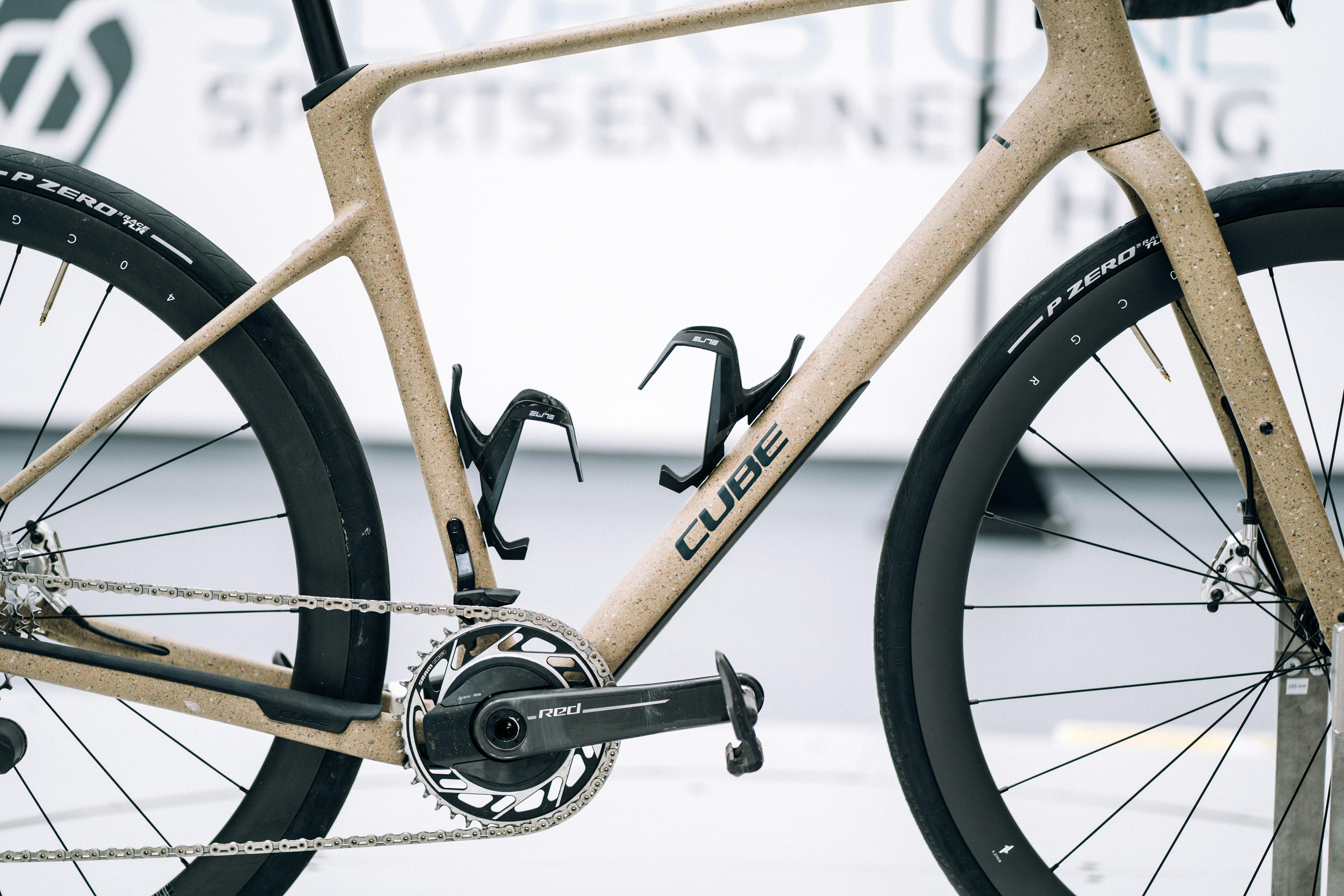
The takeaways
On flat roads, when it comes to carrying water bottles on your bike, your fastest option is to use time trial bottles. In fact, even if you don't need water, the bottles act as fairings that make you faster. That could be the Elite Chrono bottles as we've used here, but there are plenty of alternatives, including the Tacx TT or the aero bottles that came on the Trek Madone.
The savings are small, but not insignificant; in the region of half a watt at 30km/h, around one watt at 40km/h, or more as speed increases. With regards carrying one bottle vs two or three bottles, and their optimal position, the differences are even smaller, albeit still significant if you're looking to eke out every last second from your performance.
However, as soon as you start riding uphill, those small savings are quickly offset by the increase in weight, meaning if you're riding primarily uphill, your fastest approach is to not carry any bottles or cages at all. However, this is only applicable if you can finish your ride safely, without dehydration or overheating. You'll lose a lot more than the 15-watt deficit we saw here if you fail to hydrate properly or you overheat.
Assuming you've worked out how much fluid you want to carry, the above data should hopefully be a useful guide on the best way to do so.
Conversely, it should also serve as a reminder of how marginal these gains are. Having done all the maths here, I recently chose to run two round 750ml bottles in a gravel race. I knew I'd be racing for around 4 hours, in temperatures around 25C/75F, and my average speed would be in the region of 30km/h. With all that in mind, the aero penalty would cost me 0.9 watts, but since I had plans to shelter in groups, that would be reduced further. The weight penalty would cost no more than 4 watts on the steepest kicks, but less on average. The benefits, however, would be an extra 500ml of water that I could use to hydrate and cool myself (on top of the energy drink I had in a hydration pack), avoiding the need to stop at feed stops, and saving me a lot more time in the end.
Importantly, we also did some testing on hydration packs on the same day, including a test wearing the hydration pack inside a skinsuit vs on top as normal, as well as tests with the Rule 28 Gravel Suit, which holds the hydration bladder in a sleeve at the rear. We'll share the data for that soon.
But to go back to the very beginning, my friend was right. Empty bottle cages are indeed slower. On flat terrain, they're half a watt slower than no bottle cages at all, although that saving shrinks to just a tenth of a watt when compared to leaving your bottles in place.

Josh is Associate Editor of Cyclingnews – leading our content on the best bikes, kit and the latest breaking tech stories from the pro peloton. He has been with us since the summer of 2019 and throughout that time he's covered everything from buyer's guides and deals to the latest tech news and reviews.
On the bike, Josh has been riding and racing for over 15 years. He started out racing cross country in his teens back when 26-inch wheels and triple chainsets were still mainstream, but he found favour in road racing in his early 20s, racing at a local and national level for Somerset-based Team Tor 2000. These days he rides indoors for convenience and fitness, and outdoors for fun on road, gravel, 'cross and cross-country bikes, the latter usually with his two dogs in tow.
You must confirm your public display name before commenting
Please logout and then login again, you will then be prompted to enter your display name.
